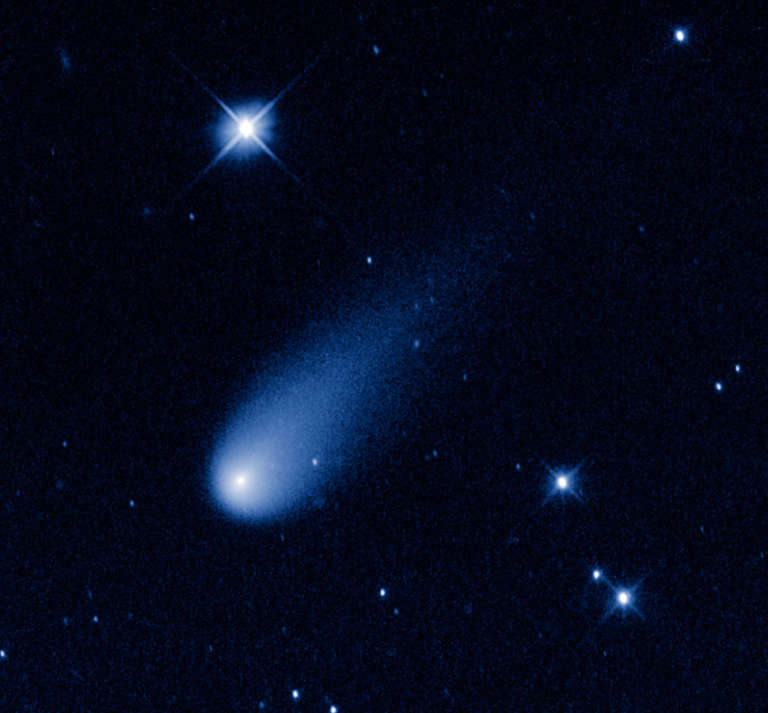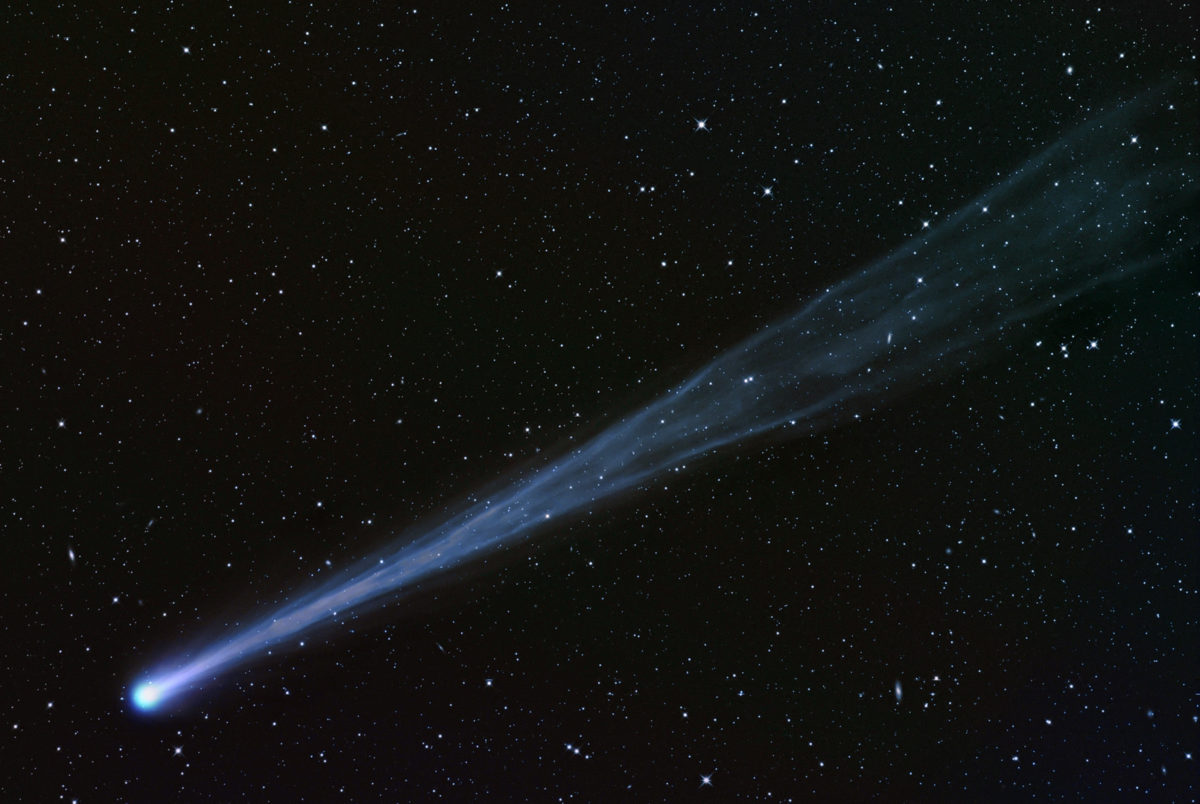Karl Battams • Nov 26, 2013
Comet ISON: Your Half-time Report
Editor's note: This post first appeared at the Comet ISON Observing Campaign website and is reposted here with permission.
I sit writing this at 38,000 feet as I head out to Kitt Peak to join my fellow CIOC-ers Matthew and Casey for perihelion observations of Comet ISON, and I find myself having an early moment of reflection.
When I first heard about comet ISON and its sungrazing orbit in September 2012, I though, "this sounds promising, but there's a long time between now and perihelion, and anything could happen. I'm not going to get excited over this one just yet." In January 2013 I found myself at a meeting in Washington DC in which ISON was discussed and the representative from NASA Headquarters recommended that maybe the science community orchestrate an observing campaign centered on the comet. Having lived through a similar event before with the observing campaign to support the NASA Deep Impact mission, Dr. Casey Lisse volunteered to lead the effort and immediately tapped a couple of attendees on the shoulder, myself included, to join the Campaign team.
I've never been involved in something like this, so I really wasn't certain what to expect of the Campaign or of the comet. What has unfolded is simply beyond any expectation I could ever have had.

From the word "go", we had several major tasks that included organizing a large meeting, creating this website, and putting out two major fires centered around the opposing views that Comet ISON was either the "Comet of the Century" (it's not) or was an impending "Comet Kohoutek" PR disaster (it's not). Between those over-hyped or over-cautious media reports, the skeptics and the conspiracists, I think we've done a pretty good job of being both a calming influence, and a group of scientists that the public have learned to trust for impartial, fact-based information. (I hope that's the case, anyway.)
But what I want to focus on here is the achievement of the NASA Comet ISON Observing Campaign as a whole, and the army of professional and amateur astronomers who have contributed to it so far. There have been coordinated comet observing campaigns before, but never one on this scale. The reasons for this are numerous.
One of the biggest factors in our favor has been the orbit of the comet, which brings it through the solar system, fairly close to both Mars and Mercury where we have several orbiting spacecraft, and then through the Sun's outer atmosphere in a domain that is heavily monitored by a fleet of sun-watching satellites. Ground-based observing conditions have never been ideal (yet!) but nonetheless the comet has been pretty well placed to allow scores of professional and amateur astronomers to target the comet, making invaluable observations and truly stunning images.

But perhaps the most important factor in the ongoing popularity and success of the Campaign has been the Internet. This is the first widespread campaign of its kind in what I would consider the "digital age", where almost everyone has regular access to the Internet, and many of us carry powerful computers around in our pockets that can also occasionally receive phone calls. This has given us the ability to spread the word, the data, and the excitement over a medium that touches a significant proportion of the Earth's population.
Finally, of course, the comet itself has been a true star. The images from the ground and from space have been beautiful, even though the comet itself has been frustrating, baffling, predictable and unpredictable in equal measures. I think - or hope - that because of this and the uncertainty of the future, the public has truly embraced the excitement of this event. We are all standing side-by-side as we witness a complete scientific mystery unfold before us. We have absolutely no idea if ISON will survive past the Sun or not, and how it might look in our December night skies, if it ever gets that far. This is ground-breaking science unfolding for everyone at the same time and all you need is an internet connection in order to follow along!

I want to be clear here: this is not an obituary for comet ISON, or for the Campaign. This is your Half-time report! Comet ISON has nearly finished its inbound journey from the deep freeze of the Oort Cloud and is just three days from swinging through the solar atmosphere. For most astronomers, it's a chance to step away from the telescopes and maybe get a few hours extra sleep in the morning while the comet is washed out by the blinding sunlight. But assuming that some part of the comet survives this brush with the Sun, we have the outbound journey to look forward to, with ISON quickly rising high into the dark December night skies after sunset, and holding the potential for some of the best images yet!
And even if these few days are ISON's last, we now have arguably the single largest cometary data set in history that we have to begin sorting, analyzing and writing about. This will take months, and throughout all of 2014 there will be dozens of new scientific papers released that use data obtained as part of the Campaign, and numerous talks, presentations and workshops. Even if comet ISON's show is nearly over, for us scientists it honestly is just the beginning.
This has already been a truly historic event, and one that I'm somewhat overwhelmed to have been part of. But there's little time to dwell as the coming week will be my busiest yet as I try to keep this website regularly updated, monitor and analyze the realtime solar spacecraft images, make movies and pictures for scientists and the web, answer the inevitable media enquiries, take part in numerous telecons and interviews, and try and squeeze in filming with a number of crews that will be with us producing science documentaries. If I'm lucky, I might get to sleep one or two hours too.

Support our core enterprises
Your support powers our mission to explore worlds, find life, and defend Earth. You make all the difference when you make a gift. Give today!
Donate

 Explore Worlds
Explore Worlds Find Life
Find Life Defend Earth
Defend Earth

